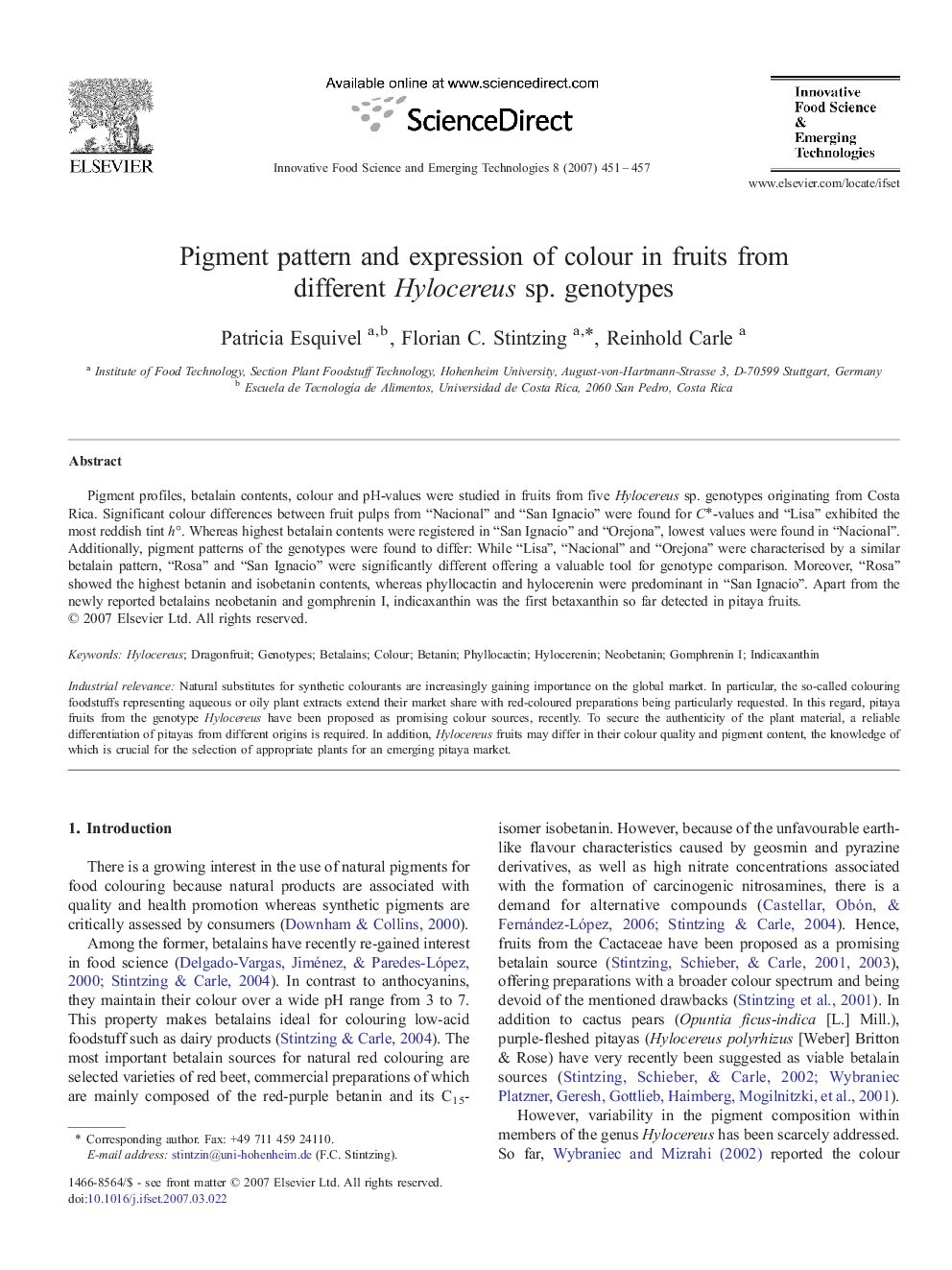| Article ID | Journal | Published Year | Pages | File Type |
|---|---|---|---|---|
| 2087515 | Innovative Food Science & Emerging Technologies | 2007 | 7 Pages |
Pigment profiles, betalain contents, colour and pH-values were studied in fruits from five Hylocereus sp. genotypes originating from Costa Rica. Significant colour differences between fruit pulps from “Nacional” and “San Ignacio” were found for C⁎-values and “Lisa” exhibited the most reddish tint h°. Whereas highest betalain contents were registered in “San Ignacio” and “Orejona”, lowest values were found in “Nacional”. Additionally, pigment patterns of the genotypes were found to differ: While “Lisa”, “Nacional” and “Orejona” were characterised by a similar betalain pattern, “Rosa” and “San Ignacio” were significantly different offering a valuable tool for genotype comparison. Moreover, “Rosa” showed the highest betanin and isobetanin contents, whereas phyllocactin and hylocerenin were predominant in “San Ignacio”. Apart from the newly reported betalains neobetanin and gomphrenin I, indicaxanthin was the first betaxanthin so far detected in pitaya fruits.Industrial relevanceNatural substitutes for synthetic colourants are increasingly gaining importance on the global market. In particular, the so-called colouring foodstuffs representing aqueous or oily plant extracts extend their market share with red-coloured preparations being particularly requested. In this regard, pitaya fruits from the genotype Hylocereus have been proposed as promising colour sources, recently. To secure the authenticity of the plant material, a reliable differentiation of pitayas from different origins is required. In addition, Hylocereus fruits may differ in their colour quality and pigment content, the knowledge of which is crucial for the selection of appropriate plants for an emerging pitaya market.
